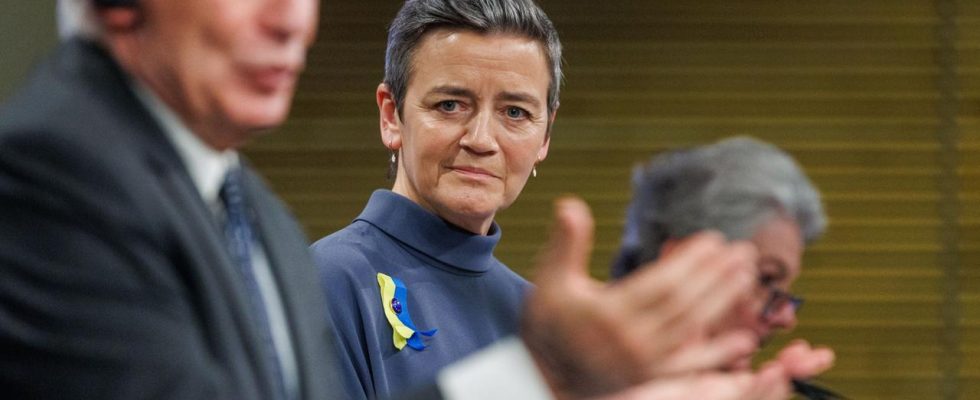analysis
The EU wants to spend more money on arms production – and has several problems with it: It must not undermine NATO or nation states and must also be resourceful when it comes to covering costs.
A back and forth on the stage of the Berlaymont press room: three EU commissioners who take turns trying to explain why something urgently needs to change in Europe’s defense policy – but then all three admit one after the other that they are actually not responsible for the issue . Internal Market Commissioner Thierry Breton said: “This is in no way about taking responsibility for defense away from the member states.” Even if this is assumed by interested parties. And Josep Borrell, Vice President of the EU Commission and High Representative for Foreign Affairs and, at least, Security Policy, at least partially responsible in terms of title, echoed the same sentiment: “Breton is not the Commissioner for Defense!”
That was supposed to sound reassuring, but it was a reaction to the criticism that had come from Europe’s capitals even before the Commission’s new strategy for the defense industry was published. There were also critical voices from NATO circles, which is why Competition Commissioner Margrethe Vestager tried to limit the damage on this front. The Europeans remained “completely loyal to NATO” in all efforts to achieve armaments autonomy, the Dane assured.
The goal: weapons “Made in Europe”
The fact that Commissioner Breton had spoken a few months earlier of what he saw as Europe’s need to convert to a “war economy” still provokes distant reactions when the Frenchman wants to deal with security policy issues. This is one of the reasons why the goals were formulated a little more modestly this time. Europe’s defense industry should become more independent of the USA and it should be supported with public money on the way to more and faster production of weapons and ammunition. This is the core of the long-awaited new strategy for Europe’s defense industry, which was announced in detail by Commission President Ursula von der Leyen herself.
More weapons “Made in Europe” – that is the goal. That hasn’t been the case so far. Since Russia’s attack on Ukraine a good two years ago, Commissioner Breton calculates that the Europeans have procured 68 percent of the weapons supplied to Kiev from the USA. With European tax money, but not from European arms companies, which particularly annoys him. He counters with new programs, which he abbreviates as usual in Brussels – one is called EDIP (European Defense Industry Program). The goal is for Europeans to invest “at least 50 percent of their defense procurement budget” in defense companies based in Europe by 2030.
Money from the current EU budget
There will also be new subsidies and the Commission wants to help the arms industry. They want to provide 1.5 billion euros from the current budget – that’s not a lot when it comes to weapons production. In any case, the question arises as to why taxpayers’ money should be used to help an industry that posted record profits during the war years. There is also talk of eliminating VAT if several European member states decide to procure weapons together.
From Vestager’s point of view, the fact that national solo efforts are still the rule here is a big problem. She criticizes this as an “ineffective use of taxpayers’ money.” However, no real progress has yet been made in eliminating the problem.
Such a new model of cooperation was tried out in the procurement of artillery ammunition that is urgently needed in Ukraine. The goal was one million bullets and should be achieved by the end of March. So far, however, only a fraction has actually been delivered.
Helga Schmidt, tagesschau, March 5th, 2024 7:52 p.m

